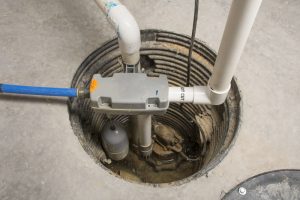 Your sump pump is one of the most important components there is when it comes to your plumbing system. It helps prevent water damage from flooding, and goes to work automatically as excess water gathers in the sump (a pit). Then, that water is pumped out either into the municipal wastewater supply or a well.
Your sump pump is one of the most important components there is when it comes to your plumbing system. It helps prevent water damage from flooding, and goes to work automatically as excess water gathers in the sump (a pit). Then, that water is pumped out either into the municipal wastewater supply or a well.
Of course, not all homes in the Madison area have basements, and not all neighborhoods are susceptible to flood risks. However, sump pumps definitely have their place for the homeowners who do benefit from them. Whether it’s snowmelt or a plumbing burst, your home can certainly accumulate a lot of property damage without a functioning sump pump, from rotted wood and mold growth to other hazards caused by the excessive and stagnant moisture.
What if you already know all this and have a sump pump in place already? That’s great! Now is the perfect time to test it and make sure it’s ready for the coming season!
How to Check a Sump Pump’s Functionality
Testing your sump pump on occasion is very important, since they aren’t an appliance that gets used on a regular basis—you might even go a year or longer without it needing to kick on, and therefore you could have a broken sump pump and not even know it until the lowest level of your home floods.
Fortunately, testing your sump pumps is pretty easy. First, you should check to make sure it has power going to it, and that it’ll turn on automatically. Simply find the outlet where the sump pump is plugged in, unplug it, and then plug it back in (sounds like rebooting an electronic device, right?) If the sump pump turns on, you’re doing great so far! If not, however, then something is wrong and it’s time to call in a licensed plumber.
So long as it turned on without issues, your next step is to pour water into the sump—this is the actual pit where the water collects. First, though, you’ll want to clear the sump out of any debris such as rocks, gravel, or leaves. You want the sump to be as clean as possible.
Next, pour a few gallons of water down into the sump. If it’s a pedestal pump (that is, it’s positioned above the sump) then watch the float in the sump as the water raises it. This should cause the pump to cycle on. If the pump is a submersible one (meaning the pump is down in the sump itself) then the pump should cycle on once the water rises above the intakes.
Remember, just because your sump pump cycles on, this doesn’t necessarily mean it’s working as it should. Keep an eye on the pump to ensure that it’s actually removing the water. Lastly, keep in mind that a sump pump is designed for use with water. Therefore, testing it without water can end up damaging the motor if you run the system for too long.
Schedule your sump pump services with a professional Madison, NJ plumber, by reaching out to Max Sr & Paul Schoenwalder Plumbing, Heating and Air Conditioning, A Corp. today!
